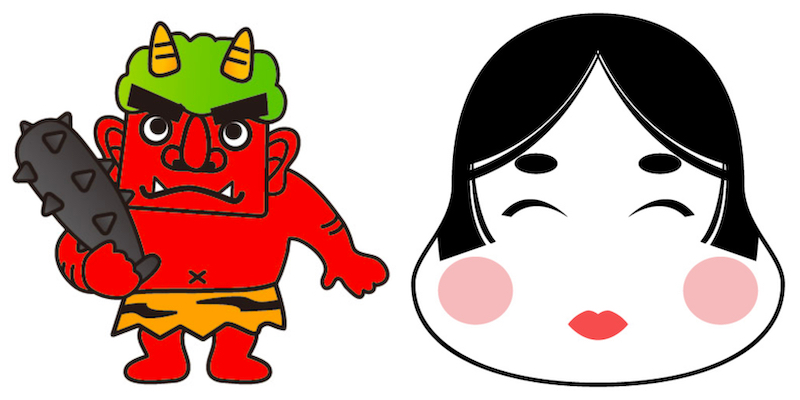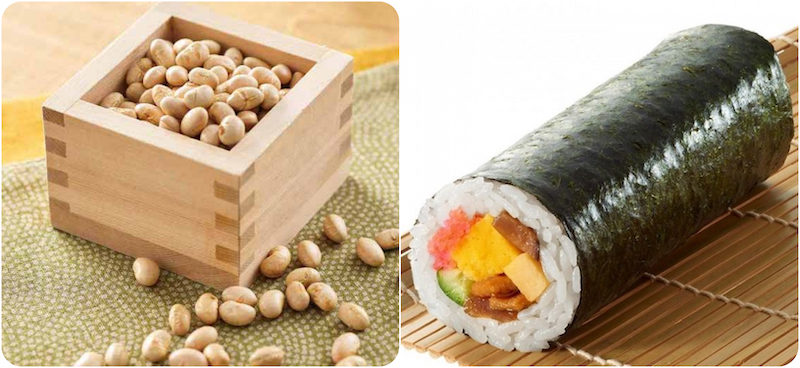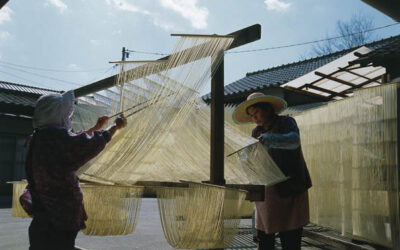
ONI wa SOTO FUKU wa UCHI
Throw out the ogres! Bring in Good Fortune!
節分
SETSUBUN means “break between seasons” and such breaks occur many times during the year. However, today Japan celebrates the setsubun break that comes early in February and corresponds to the start of the lunar New Year. Indeed in other parts of Asia, such as China, this break is celebrated as New Years. Because Japan switched to using the Gregorian calendar late in the 19th century Setsubun is now celebrated apart from Oshōgatsu (New Year activities), which came to a close in mid January.
Setsubun rituals developed to insure that evil was left behind in the old year, and good things could (and would) happen in the New Year to come. Oni monsters personify bad things and are traditionally expelled by shouting and throwing fuku mamé (dry-roasted “good luck” soybeans) at them. Good fortune is welcomed in by chanting and catching good luck beans tossed out by Otafuku (Goddess of Good Fortune). At temples, shrines, and places of business in Japan these rituals are still followed. In schools and many households, children make monster masks to don while yelling:
ONI WA SOTO (throw the ogres out!)
This is said standing at the entrance to home, school and/or place of
business while throwing several beans OUT, over your shoulder.
FUKU WA UCHI (bring in good fortune!)
This said after you turn around and throw a few beans over your shoulder
IN to your home, school or place of business.
Finally, each person eats the same number of beans as their age. (I love dry-
roasted soybeans and each year I am glad to eat more of them!)
Want to make your own? DOWNLOAD a recipe for Fuku Mame roasted soybeans

Another Setsubun ritual is gobbling plump, unsliced, sushi rolls called éhō maki. The rolled sushi is eaten while facing the auspicious direction (éhō) chosen for that particular year. This year (2021) the direction from which good things will come is Nan Nan Tō (South by Southeast).
南南東
Want to make your own éhō maki (Good Fortune sushi rolls)?
DOWNLOAD the recipes for making Classic Sushi Meshi and a BASIC ÉHO SUSHI ROLL




